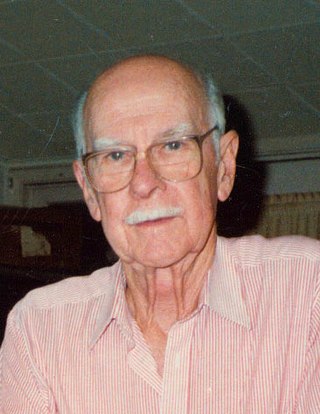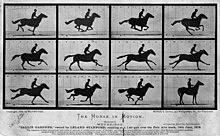
The Central Pacific Railroad (CPRR) was a rail company chartered by U.S. Congress in 1862 to build a railroad eastwards from Sacramento, California, to complete most of the western part of the "First transcontinental railroad" in North America. Incorporated in 1861, CPRR ceased independent operations in 1875 when the railroad was leased to the Southern Pacific Railroad. Its assets were formally merged into Southern Pacific in 1959.

Theodore Dehone Judah was an American civil engineer who was a central figure in the original promotion, establishment, and design of the First transcontinental railroad. He found investors for what became the Central Pacific Railroad (CPRR). As chief engineer, he performed much of the route survey work to determine the best alignment for the railroad over the Sierra Nevada, which was completed six years after his death.

America's first transcontinental railroad was a 1,911-mile (3,075 km) continuous railroad line built between 1863 and 1869 that connected the existing eastern U.S. rail network at Council Bluffs, Iowa, with the Pacific coast at the Oakland Long Wharf on San Francisco Bay. The rail line was built by three private companies over public lands provided by extensive U.S. land grants. Building was financed by both state and U.S. government subsidy bonds as well as by company-issued mortgage bonds. The Western Pacific Railroad Company built 132 miles (212 km) of track from the road's western terminus at Alameda/Oakland to Sacramento, California. The Central Pacific Railroad Company of California (CPRR) constructed 690 miles (1,110 km) east from Sacramento to Promontory Summit, Utah Territory. The Union Pacific Railroad (UPRR) built 1,085 miles (1,746 km) from the road's eastern terminus at the Missouri River settlements of Council Bluffs and Omaha, Nebraska, westward to Promontory Summit.

Palo Alto is a charter city in the northwestern corner of Santa Clara County, California, United States, in the San Francisco Bay Area, named after a coastal redwood tree known as El Palo Alto.

Jane Elizabeth Lathrop Stanford was an American philanthropist and co-founder of Stanford University in 1885, along with her husband, Leland Stanford, in memory of their only child, Leland Stanford Jr., who died of typhoid fever at age 15 in 1884. After her husband's death in 1893, she funded and operated the university almost single-handedly until her unsolved murder by strychnine poisoning in 1905.

Collis Potter Huntington was an American industrialist and railway magnate. He was one of the Big Four of western railroading who invested in Theodore Judah's idea to build the Central Pacific Railroad as part of the first U.S. transcontinental railroad. Huntington helped lead and develop other major interstate lines, such as the Southern Pacific Railroad and the Chesapeake & Ohio Railway (C&O), which he was recruited to help complete. The C&O, completed in 1873, fulfilled a long-held dream of Virginians of a rail link from the James River at Richmond to the Ohio River Valley. The new railroad facilities adjacent to the river there resulted in expansion of the former small town of Guyandotte, West Virginia into part of a new city which was named Huntington in his honor.

The golden spike is the ceremonial 17.6-karat gold final spike driven by Leland Stanford to join the rails of the first transcontinental railroad across the United States connecting the Central Pacific Railroad from Sacramento and the Union Pacific Railroad from Omaha on May 10, 1869, at Promontory Summit, Utah Territory. The term last spike has been used to refer to one driven at the usually ceremonial completion of any new railroad construction projects, particularly those in which construction is undertaken from two disparate origins towards a common meeting point. The spike is now displayed in the Cantor Arts Center at Stanford University.

The Southern Pacific was an American Class I railroad network that existed from 1865 to 1996 and operated largely in the Western United States. The system was operated by various companies under the names Southern Pacific Railroad, Southern Pacific Company and Southern Pacific Transportation Company.

"The Big Four" was the name popularly given to the famous and influential businessmen, philanthropists and railroad tycoons who funded the Central Pacific Railroad (C.P.R.R.), which formed the western portion through the Sierra Nevada and the Rocky Mountains of the First Transcontinental Railroad in the United States, built from the mid-continent at the Missouri River to the Pacific Ocean during the middle and late 1860s.

El Palo Alto is a coast redwood located on the banks of the San Francisquito Creek in Palo Alto, California, a city in the San Francisco Bay Area. The namesake of the city and a historical landmark, El Palo Alto is 1083–1084 years old and stands 110 feet (34 m) tall.

Oliver Martin Johnston Jr. was an American motion picture animator. He was one of Disney's Nine Old Men, and the last surviving at the time of his death from natural causes. He was recognized by The Walt Disney Company with its Disney Legend Award in 1989. His work was recognized with the National Medal of Arts in 2005.

The Leland Stanford Mansion, often known simply as the Stanford Mansion, is a historic mansion and California State Park in Sacramento, California, which serves as the official reception center for the Californian government and as one of the official workplaces of the Governor of California.

Gov. Stanford is a 4-4-0 steam locomotive originally built in 1862 by Norris Locomotive Works. Following construction, it was disassembled and hauled by the ship Herald of the Morning around Cape Horn to California, then up the rivers aboard the schooner Artful Dodger, arriving in Sacramento on October 6, 1863. With a dedication ceremony that included artillery discharge, it entered service on November 9, 1863, and it was used in the construction of the First transcontinental railroad in North America by Central Pacific Railroad bearing road number 1. It was Central Pacific's first locomotive and it is named in honor of the road's first president and ex-California governor, Leland Stanford.

El Gobernador was an American 4-10-0 steam locomotive built by Central Pacific Railroad at the railroad's Sacramento, California shops. It was the last of Central Pacific's locomotives to receive an official name and was also the only locomotive of this wheel arrangement to operate on United States rails. At the time it was built, El Gobernador was the largest railroad locomotive ever built. Its name is reminiscent of the railroad's first locomotive, Gov. Stanford, as El Gobernador is Spanish for The Governor. This locomotive is a Mastodon type. Confusingly, this was the unofficial name for an earlier engine, "Mastodon" No. 229, the first successful 4-8-0 ever built. Both engines looked nearly identical, except that El Gobernador was longer and had an additional pair of drivers.

Palo Alto station is an intermodal transit center in Palo Alto, California. It is served by Caltrain regional rail service, SamTrans and Santa Clara VTA local bus service, Dumbarton Express regional bus service, the Stanford University Marguerite Shuttle, and several local shuttle services. Palo Alto is the second-busiest Caltrain station after San Francisco, averaging 7,764 weekday boardings by a 2018 count. The Caltrain station has two side platforms serving the two tracks of the Peninsula Subdivision and a nearby bus transfer plaza.

The Jupiter was a 4-4-0 steam locomotive owned by the Central Pacific Railroad. It made history when it joined the Union Pacific No. 119 at Promontory Summit, Utah, during the golden spike ceremony commemorating the completion of the first transcontinental railroad in 1869.
Samuel Skerry Montague (1830–1883) was a railway engineer responsible for building railways in the United States. He was appointed chief engineer of the Central Pacific Railroad in 1863. He also worked on the Southern Pacific Railroad and the First transcontinental railroad.
The Western Pacific Railroad (1862–1870) was formed in 1862 to build a railroad from Sacramento, California, to the San Francisco Bay, the westernmost portion of the First transcontinental railroad. After the completion of the railroad from Sacramento to Alameda Terminal on September 6, 1869, and then the Oakland Pier on November 8, 1869, which was the Pacific coast terminus of the transcontinental railroad, the Western Pacific Railroad was absorbed in 1870 into the Central Pacific Railroad.

David Hewes, was an American born into one of the "old families" of Massachusetts that could be traced back seven generations to the patriot Joshua Hewes. Hewes is associated with the construction and completion of the First transcontinental railroad, although he was an enthusiastic supporter rather than being directly connected with the construction thereof. He provided a golden spike marking completion of the railroad and he also planned the connection of the railroad company's wires to Western Union so the taps of the silver hammer driving the golden spike at Promontory Summit, Utah Territory could be heard instantaneously coast-to-coast.

Timothy Hopkins was the adopted son of Central Pacific Railroad co-owner Mark Hopkins' widow, Mary Hopkins, and friend of another co-owner Leland Stanford and his wife, Jane. He was one of the founders of Palo Alto and a trustee of Stanford University for over 50 years. His estate is now the site of the Menlo Park Civic Center and of SRI International.


























